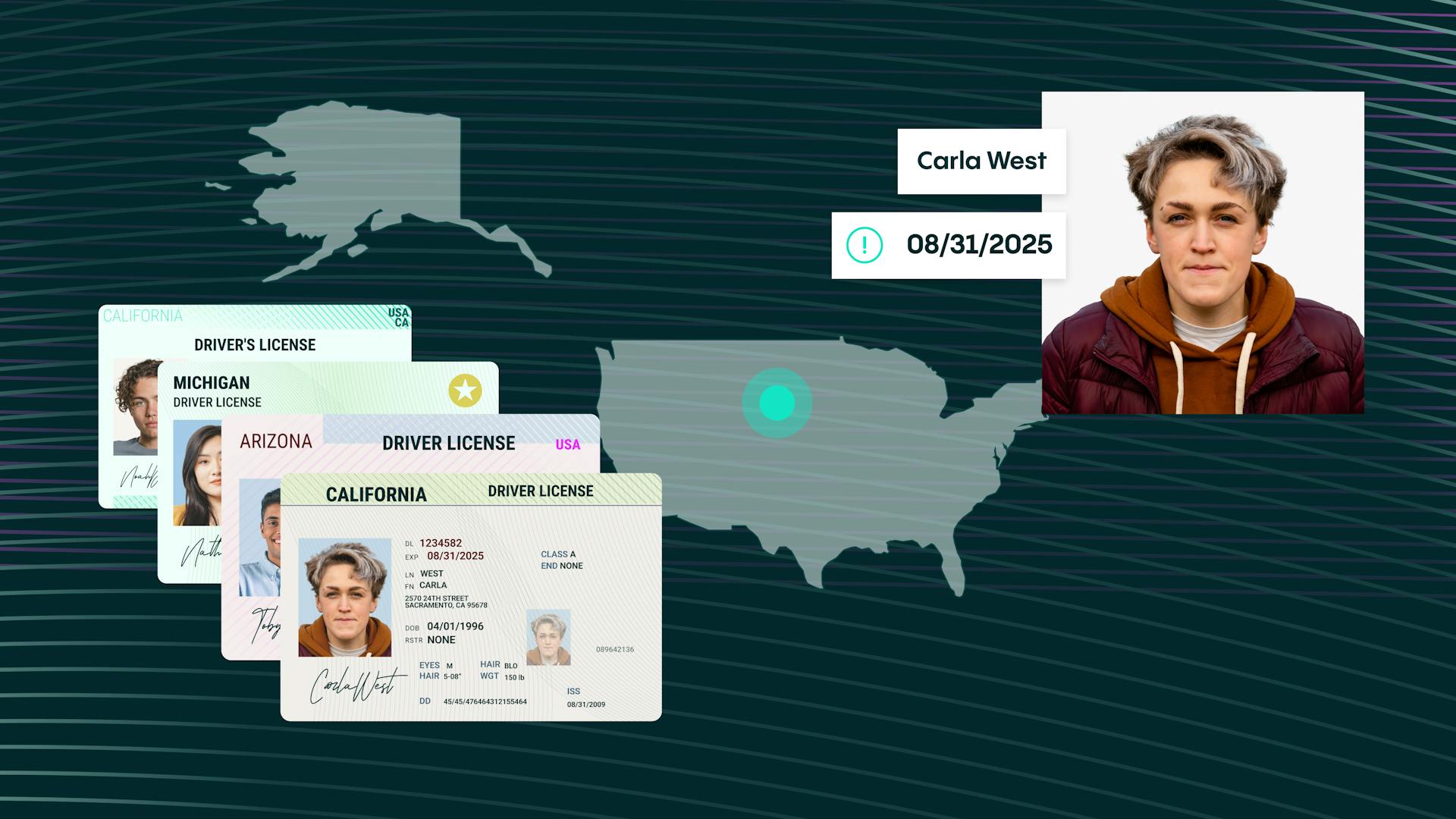The Real ID Act and beyond: unraveling the significance of validity periods in fraud prevention
Explore the often-overlooked aspect of identity document validity periods. Typically, people only consider the expiration date when renewal approaches. Validity periods are generally straightforward, spanning 5 or 10 years, and documents often expire on the same day they were issued. Yet, the scenario in the USA presents a unique perspective.


Camila Diz Nuvolari
The meaning behind validity periods: a key aspect of fraud prevention
The validity period of an identity document is something that most people don’t think about other than when the expiry date is approaching and they have to start preparing for the renewal process. In all fairness, there is nothing special about validity periods in a broader sense - documents are often valid for an exact amount of time, most commonly 5 or 10 years. It’s also the most common that those timespans are very exact, with the document expiring on the same day that it was issued, only an amount of years in the future. However, the situation in the USA is a bit different.
In the US there are very few identity documents that look the same and are governed by the same rules across all 50 states. Passports and residence permits (including the famous “green card”) are the main examples of federally-issued forms of identification. Those will be exactly the same; it doesn’t matter which state the holder lives in.
On the opposite side, each of the 50 states, plus Washington, D.C., plus each US territory, issue their own driver licenses and identification cards, each with their own designs including the issuing state's singularities and landmarks of each location. Beyond the design, there are also individual rules set forth by each state, district, or territory authority.
There is a widespread consensus that in most cases the US identity documents expire on the holder’s birthday, or follow a rule that is dependent and directly related to the holder’s birthday. There is also some overlap between validity period rules, where some states follow the same, or very similar prescriptions for this aspect. 4, 5, and 8-year renewal cycles are some of the most common, being used in Pennsylvania (4 years), California (5 years), and Texas (8 years), for example.
The 8-year renewal cycle is also common for another reason - it is directly associated with compliance with the Real ID Act. If a document bears the typical Real ID star symbol (or some accepted adaptation of it), meaning it is a Real ID-compliant document, it cannot be valid for longer than 8 years (Section 202(d)(10) of the Real ID Act). Something to note about this set period (and many others, not necessarily related to this Act, but sometimes being a rule on the state level) is that the calculation of the validity period works differently in most states than what one could assume - to match with the holder’s birthday, the period often exceeds the prescribed amount of years, being, in reality, X years prescribed + Y months until the given birth date. This overcompensation sometimes reaches close to another full year of validity, while, in the case of Real ID-compliant documents, still fulfilling the given Section of the Act and its proposed security standards (for example, a document valid for 8 years and 11 months is still considered compliant with the Act).
Onto the more unique cases, there are a few states with such intricate and specific rules for how long the documents should be valid, that knowing this type of information helps us more accurately process these documents. Some examples:
Arizona
Perhaps not an intricate rule, but rather a quirk. In Arizona, regular driver’s licenses (non-Real ID compliant) are issued with an expiry date matching the holder’s 65th birthday. Despite the decades-long validity period, license holders in Arizona are required to update their photographs every 12 years. The holders then will receive a replacement license with their updated portrait and the same date of expiry - their 65th birthday. This process implies that the date on the document is not really when it expires; instead, a 12-year “invisible” renewal cycle is followed. As for non-compliant identification cards, the expiry date is completely waived, while the photograph update is still expected on the same regular basis mentioned previously. The Real ID-compliant counterparts of driver's licenses and identification cards in this state follow the straightforward rule of expiring exactly 8 years from the issue date.
West Virginia
Similar to Virginia, regular driver’s licenses and identification cards (both compliant and not compliant with the Real ID Act) issued in West Virginia follow the same rule, expiring on the holder’s birthday in years in which their age is evenly divisible by 5, creating a 5-year renewal cycle. In cases when the driver needs to be phased into the cycle for whatever reason (e.g. coming from another state), the State Code prescribes that the period can be adjusted, with a minimum of 3 and a maximum of 7 years of validity (source).
North Dakota
This state has, perhaps, one of the most specific ways of calculating the validity period. The expiration date of a non-commercial driver’s license issued to an individual whose birth occurred in a year ending in an odd numeral is on the anniversary of the birthday in the third subsequent year ending in an odd numeral. For those born on years ending in even numerals, the same rule applies, with the expiration of the document being on the anniversary of the birthday in the third subsequent year ending in an even numeral. Translating this into a more tangible example, someone born on August 25th, 1993, who was issued a license in 2023, would have that license expiring on August 25th, 2029. Luckily, identification cards follow a simple 8-years-from-issue-date rule to compensate.
Although not used so extensively across the country, detailed and intricate rules for something as mundane as how long an identity document is valid for are a very interesting topic in itself. At Veriff, we have the necessary expertise on complex and far-from-straightforward aspects of a document, making us an ideal IDV provider focused on fraud prevention from angles perhaps not covered elsewhere.
FAQ
1. What is the significance of document validity periods in fraud prevention?
Validity period analysis is not a fail-safe method (check FAQ 3 for more info), but it is a great asset in the fraud prevention toolbox. Oftentimes, it is the first, most obvious red flag, which directs the document analysis towards the right tracks, which ultimately results in a bad actor being denied access to services requiring legitimate identities.
2. How does compliance with the Real ID Act contribute to fraud prevention through document validity?
The Real ID Act makes this complex topic, which is full of grey areas, a bit more black and white. It gives the absolute certainty that documents issued under the Act will follow the prescribed restrictions for how long the validity period can be
3. What challenges are associated with enforcing document validity periods for effective fraud prevention?
The biggest challenge is the adherence to the rules prescribed in law. Many States account for the head of the Department of Motor Vehicles (or local equivalent) to have the last word regarding documents, including their validity. With that, there are instances where the validity of a document cannot be traced back to the associated law, and require extra checks to ensure the legitimacy of such documents.
Explore more
Get the latest from Veriff. Subscribe to our newsletter.
Veriff will only use the information you provide to share blog updates.
You can unsubscribe at any time. Read our privacy terms



